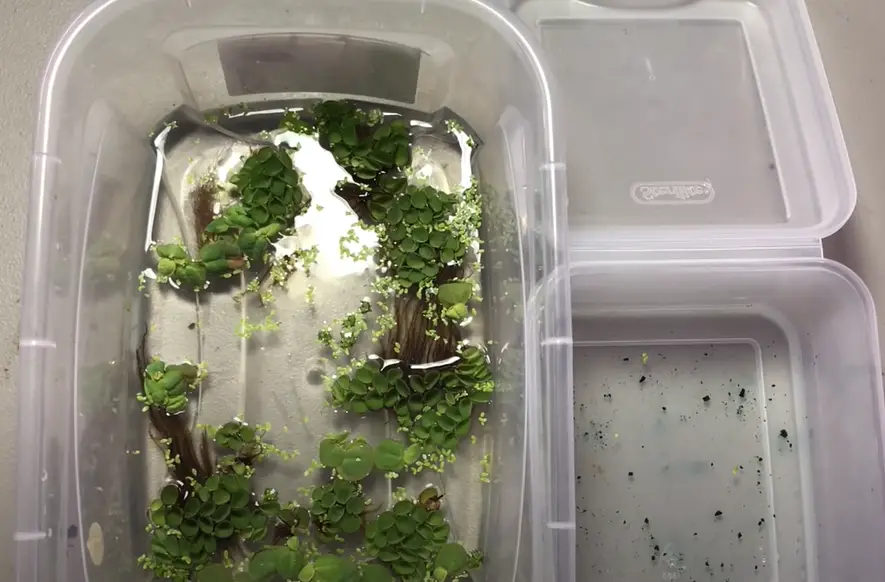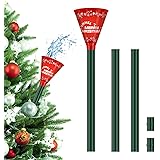Looking to maintain a healthy aquarium? One crucial step is knowing how to quarantine aquarium plants. This simple practice can help keep your aquatic environment free from unwanted pests, diseases, and algae. By isolating new plants before introducing them to your tank, you’ll minimize the risk of contamination and ensure the well-being of your aquatic ecosystem.
In this article, we’ll explore the why, when, and how of quarantining aquarium plants, providing you with the knowledge to safeguard your underwater paradise. Let’s dive right in!
How to Quarantine Aquarium Plants
Aquarium plants are not only beautiful additions to your underwater world, but they also provide crucial benefits to the ecosystem of your aquarium. However, introducing new plants to your aquarium without proper quarantine can lead to the introduction of harmful pests, diseases, or unwanted algae.
Quarantining your aquarium plants before adding them to your tank is a necessary step to ensure the overall health and well-being of your aquatic environment. In this article, we will guide you through the process of effectively quarantining aquarium plants, step by step.
Why Should You Quarantine Aquarium Plants?
Quarantining aquarium plants serves several important purposes. By isolating new plants before introducing them to your main tank, you can:
- Prevent the spread of pests and diseases:
New plants may carry harmful pests, such as snails, planaria, or other parasites, as well as plant diseases or algae. Quarantining allows you to identify and eliminate these potential problems before they have a chance to harm your existing aquatic life.
- Observe for signs of distress or poor health:
Some plants may not adapt well to the conditions of your tank. By keeping them in a quarantine tank, you can closely monitor their health and determine if they are suitable for your aquarium environment.
- Prevent the introduction of unwanted algae:
Algae spores are commonly found on aquarium plants. Quarantining allows you to control and eliminate any algae that may be present on the new plants before they have a chance to spread and take over your main tank.
- Avoid disrupting the balance of your main tank:
Introducing new plants directly to your main tank can cause sudden changes in water parameters or other imbalances. Quarantining allows new plants to adapt to the water conditions gradually, reducing the risk of stress to your existing fish and plants.
Read More: About Gardening In An Apartment Without A Balcony: Urban Oasis
Step-by-Step Guide to Quarantine Aquarium Plants
Now that you understand the importance of quarantine for aquarium plants, let’s dive into the step-by-step process:
What You Will Need:
Before starting the quarantine process, gather the following materials:
- Aquarium tank or container: A separate, smaller tank or container will serve as your quarantine tank.
- Heater: A heater will help maintain the proper temperature for the quarantine tank.
- Filter: A simple sponge filter or air-driven filter will provide basic filtration for the quarantine tank.
- Water test kit: Test kits will help you monitor and maintain water parameters in the quarantine tank.
- Lighting: A basic light source will be necessary to provide adequate light for the quarantined plants.
- Timer: A timer will assist in maintaining a consistent light cycle for the quarantined plants.
- Net or tongs: These tools will enable you to handle the plants without damaging them.
- Algae scraper: An algae scraper will be useful for removing any algae that may appear during the quarantine period.
Step 1: Set up the Quarantine Tank
1. Clean the quarantine tank:
Thoroughly clean the tank using warm water only. Avoid using soap or any harsh chemicals as they can be harmful to the plants and fish.
2. Add water to the quarantine tank:
Fill the tank with dechlorinated water, ideally from your main tank. Make sure the water parameters match those of your main tank to maintain consistency.
3. Install the heater and filter:
Set up the heater and filter according to the manufacturer’s instructions. Adjust the heater to maintain the appropriate temperature for the plants you will be quarantining.
Step 2: Prepare the Plants for Quarantine
1. Inspect the plants:
Carefully examine each plant for signs of pests, diseases, or algae. Look for any damaged or decaying leaves, as they may indicate poor plant health.
2. Trim and remove unhealthy parts:
If you notice any damaged or decaying leaves, trim them off using clean, sterilized scissors or pruning shears. Removing these unhealthy parts will promote better plant growth and help prevent the spread of pests or diseases.
3. Rinse the plants:
Gently rinse the plants under running water to remove any loose debris or unwanted hitchhikers, such as snails or tiny insects. Be cautious not to damage the delicate leaves or roots.
Step 3: Introduce the Plants to the Quarantine Tank
1. Place the plants in the quarantine tank:
Carefully transfer the plants from their original container to the quarantine tank using a net or tongs. Be gentle to avoid damaging the plants’ delicate roots or leaves.
2. Arrange the plants:
Position the plants in a pleasing arrangement within the quarantine tank, ensuring they receive adequate light and space to grow.
3. Provide lighting and a light cycle:
Set up the lighting system over the quarantine tank and establish a light cycle similar to that of your main tank. Most aquarium plants require 10-12 hours of light per day.
Step 4: Monitor and Maintain Water Parameters
1. Test and adjust water parameters:
Regularly monitor the water parameters in the quarantine tank using a reliable test kit. Aim to maintain optimal conditions for the plants, such as appropriate temperature, pH level, ammonia, nitrite, and nitrate levels.
2. Perform water changes:
Depending on the results of your water tests, perform partial water changes as needed to maintain stable and healthy water conditions. Use dechlorinated water matching the parameters of the main tank.
3. Clean the quarantine tank:
If you notice any buildup of algae or debris, use an algae scraper to clean the tank walls. Avoid using any chemicals that may harm the plants or fish.
Step 5: Observe and Treat if Necessary
1. Monitor plant health:
Regularly observe the quarantined plants for any signs of distress, discoloration, or the presence of pests or diseases. Healthy plants should show new growth and vibrant colors.
2. Treat if issues arise:
If you notice any problems, such as pests or diseases, promptly take appropriate measures to treat them. Consult with a knowledgeable aquarium specialist or research specific treatments for the identified issues.
Quarantining aquarium plants before introducing them to your main tank is a crucial step in ensuring the overall health and balance of your aquatic environment. By following the step-by-step guide outlined in this article, you can effectively prevent the spread of pests, diseases, and unwanted algae, while also giving the new plants the opportunity to adapt to their new surroundings.
Remember to monitor water parameters, maintain optimal conditions, and promptly address any issues that may arise. With proper quarantine practices, you can enjoy a thriving and beautiful aquarium for years to come.
Read More: About How To Treat Thrips On Monstera: Practical Guide
Frequently Asked Questions (FAQs)
To quarantine aquarium plants, follow these steps:
1. Set up a separate tank or container for quarantine purposes.
2. Fill the tank with dechlorinated water and make sure the temperature matches the main aquarium.
3. Inspect the plants for any visible signs of pests, diseases, or algae.
4. Trim off any dead or decaying leaves and rinse the plants under running water to remove debris.
5. Place the plants in the quarantine tank and monitor them closely for about two weeks.
6. Observe the plants for any signs of pests or diseases during this quarantine period.
7. If any issues arise, treat the plants accordingly following appropriate methods or medication.
8. After the quarantine period, if the plants appear healthy, you can safely introduce them to the main aquarium.
Quarantining aquarium plants serves several purposes:
– It helps prevent the introduction of pests, diseases, and algae into your main aquarium.
– It allows you to closely monitor the plants for any signs of issues before adding them to the main tank.
– It helps maintain a healthy and disease-free environment for your aquatic life.
It is recommended to quarantine aquarium plants for a minimum of two weeks. This period allows you to observe the plants for any potential problems that may not be immediately visible. If issues arise during this time, you can take appropriate measures to treat or correct them before adding the plants to your main aquarium.
Having a separate tank dedicated to quarantine purposes is highly recommended. This helps to prevent any potential pests, diseases, or algae present in the plants from spreading to your main aquarium. It also allows for easier observation and treatment if needed.
Using the main aquarium for quarantine is not advised as it can risk contaminating the entire tank with any pests or diseases that may be present in the quarantined plants. Keeping a separate tank solely for quarantine purposes ensures the health and well-being of your main aquarium inhabitants.
During the quarantine period, it is crucial to monitor the plants for any signs of pests, diseases, or unusual growth patterns. Look out for visible pests such as snails, worms, or insects, as well as any discoloration, rotting, or deteriorating leaves. Additionally, check for any signs of algae infestation.
If you notice pests or diseases in your quarantined aquarium plants, there are several treatment options available. These include using appropriate medications, natural remedies, or manual removal methods. It is essential to identify the specific issue and research the best course of action to effectively eradicate the problem without harming the plants or other aquatic life.
After the two-week quarantine period, if the plants appear healthy and show no signs of pests, diseases, or unusual growth, you can safely introduce them to your main aquarium. However, it is always recommended to closely monitor the newly introduced plants for a few more days to ensure they adapt well and do not cause any disturbances in the ecosystem.
Final Thoughts
Quarantining aquarium plants is a crucial step to ensure the health and well-being of your aquatic environment. By isolating new plants for a period of time, you can prevent the introduction of pests, diseases, or unwanted hitchhikers into your tank. Place the plants in a separate tank with clean water and monitor them closely for any signs of infestation.
Regularly inspect and treat the quarantined plants if necessary. Once the quarantine period is complete, thoroughly rinse the plants before introducing them to your main aquarium. Remember, proper quarantine practices are essential to maintaining a thriving and disease-free aquatic ecosystem.
Auto Amazon Links: No products found.
Perfect Plants Christmas Tree Saver 8oz. | Easy Use Xmas Tree Preserver Food | Have Healthy Green Christmas Trees All Holiday Season
$9.97 (as of December 5, 2025 00:43 GMT +00:00 - More info- Product prices and availability are accurate as of the date/time indicated and are subject to change. Any price and availability information displayed on [relevant Amazon Site(s), as applicable] at the time of purchase will apply to the purchase of this product.
Kaiedos Christmas Tree Watering Funnel - 39 Inch Funnel, Reusable Design, Makes Watering Your Live Tree a Snap!
$14.99 (as of December 5, 2025 00:43 GMT +00:00 - More info- Product prices and availability are accurate as of the date/time indicated and are subject to change. Any price and availability information displayed on [relevant Amazon Site(s), as applicable] at the time of purchase will apply to the purchase of this product.
Wilt-Pruf® Christmas Tree/Cutting Preserver Spray |Preserves Christmas Trees, Wreaths, Garlands, Cuttings and Carved Pumpkins | Reduces Needle Drop | Keeps Cut Trees Fresh Longer | Natural (32 oz)
$21.99 (as of December 5, 2025 00:43 GMT +00:00 - More info- Product prices and availability are accurate as of the date/time indicated and are subject to change. Any price and availability information displayed on [relevant Amazon Site(s), as applicable] at the time of purchase will apply to the purchase of this product.
Forest Fresh Christmas Tree Preservative Tablets – Tree Water Additive for Live Fresh-Cut Trees – Keeps Trees Hydrated and Reduces Needle Drop – Non-Toxic, Made in USA – 1 Packet (8 Tablets)
$5.99 (as of December 5, 2025 00:43 GMT +00:00 - More info- Product prices and availability are accurate as of the date/time indicated and are subject to change. Any price and availability information displayed on [relevant Amazon Site(s), as applicable] at the time of purchase will apply to the purchase of this product.
IPOOLTENG Christmas Tree Watering Funnel 3 Tube 1 Funnels 40 Inch - 3 Section Plastic Christmas Tree Funnel Waterer, Long Funnels for Watering Trees, Best Gifts for Your Parents to Water Tree
$14.53 (as of December 5, 2025 00:43 GMT +00:00 - More info- Product prices and availability are accurate as of the date/time indicated and are subject to change. Any price and availability information displayed on [relevant Amazon Site(s), as applicable] at the time of purchase will apply to the purchase of this product.
Cuisinart 6.5" Cast Iron Smashed Burger Press, Round Flat Edge Grill Press for Crispy Smash Burgers, Burger Tool for Grill and Griddle Accessories, for BBQs and Tailgates
$24.99 (as of December 4, 2025 16:51 GMT +00:00 - More info- Product prices and availability are accurate as of the date/time indicated and are subject to change. Any price and availability information displayed on [relevant Amazon Site(s), as applicable] at the time of purchase will apply to the purchase of this product.
Snow Joe Premium Enviro Blend Ice Melt, Green-Coated Deicer Crystals, 50 lb - Safer Melter for Vegetation, Concrete & Metals w/ Anti-Corrosion Calcium Magnesium Acetate
$32.97 (as of December 4, 2025 16:51 GMT +00:00 - More info- Product prices and availability are accurate as of the date/time indicated and are subject to change. Any price and availability information displayed on [relevant Amazon Site(s), as applicable] at the time of purchase will apply to the purchase of this product.
Muddy Mat® Shown on TV Super Absorbent Microfiber Dog Door Mat for Muddy Paws, Non-Slip Washable Pet Rug, Quick Dry Chenille Entryway Carpet, Machine Washable Indoor Outdoor mat, Grey 30"x19"
$19.95 (as of December 4, 2025 16:51 GMT +00:00 - More info- Product prices and availability are accurate as of the date/time indicated and are subject to change. Any price and availability information displayed on [relevant Amazon Site(s), as applicable] at the time of purchase will apply to the purchase of this product.
OLANLY Dog Door Mat for Muddy Paws 30x20, Absorbs Moisture and Dirt, Absorbent Non-Slip Washable Doormat, Quick Dry Chenille Mud Mat for Dogs, Entry Indoor Entryway Carpet for Inside Floor, Grey
$9.99 (as of December 4, 2025 16:51 GMT +00:00 - More info- Product prices and availability are accurate as of the date/time indicated and are subject to change. Any price and availability information displayed on [relevant Amazon Site(s), as applicable] at the time of purchase will apply to the purchase of this product.
Zevo Flying Insect Trap Official Refill Cartridges - Fits Both Zevo Trap & MAX Indoor Fly Trap - Authentic Trap+Lock Technology to Catch Gnats, House & Fruit Flys (4 Official Refill Cartridges)
$14.97 (as of December 4, 2025 16:51 GMT +00:00 - More info- Product prices and availability are accurate as of the date/time indicated and are subject to change. Any price and availability information displayed on [relevant Amazon Site(s), as applicable] at the time of purchase will apply to the purchase of this product.











